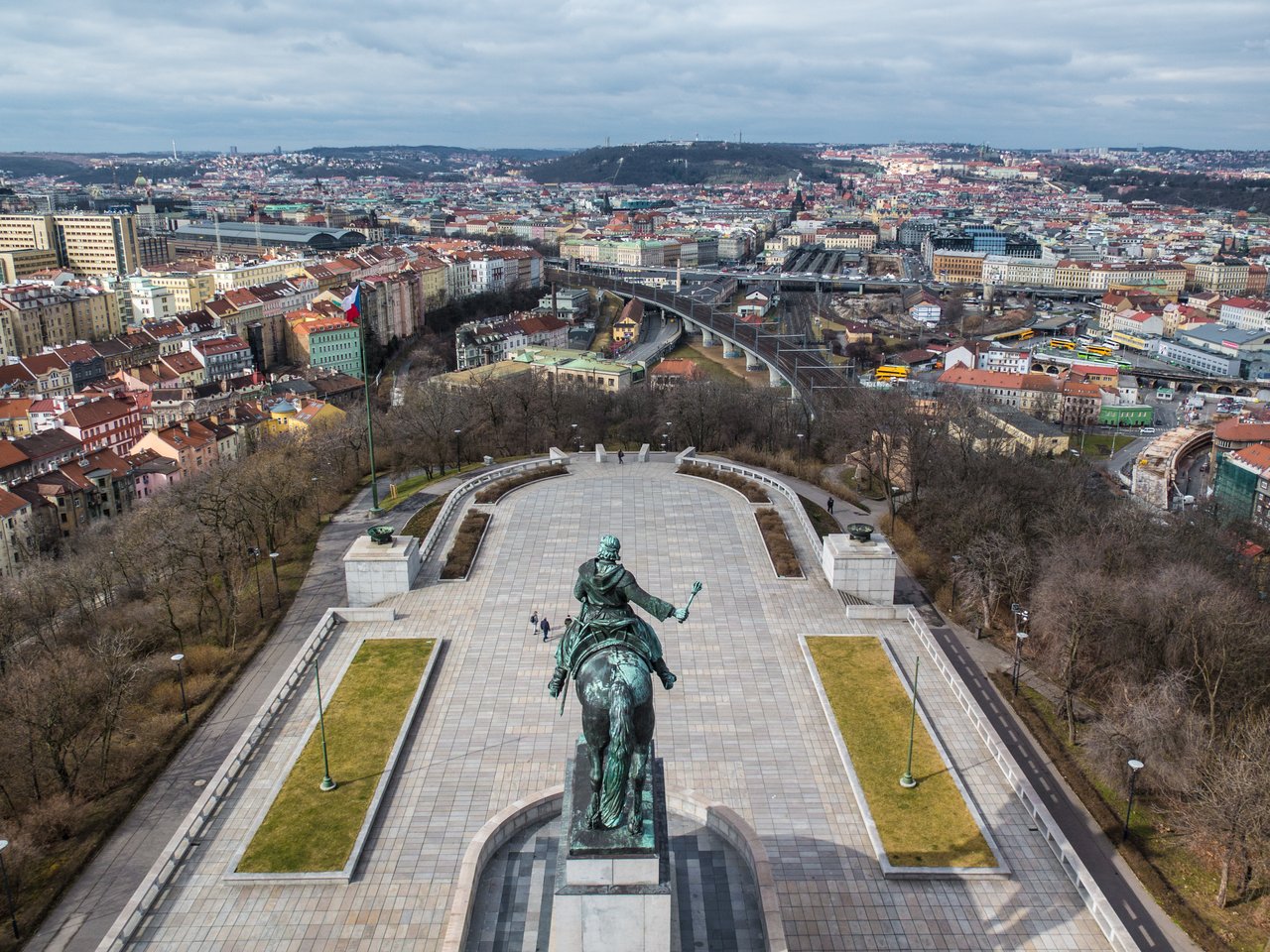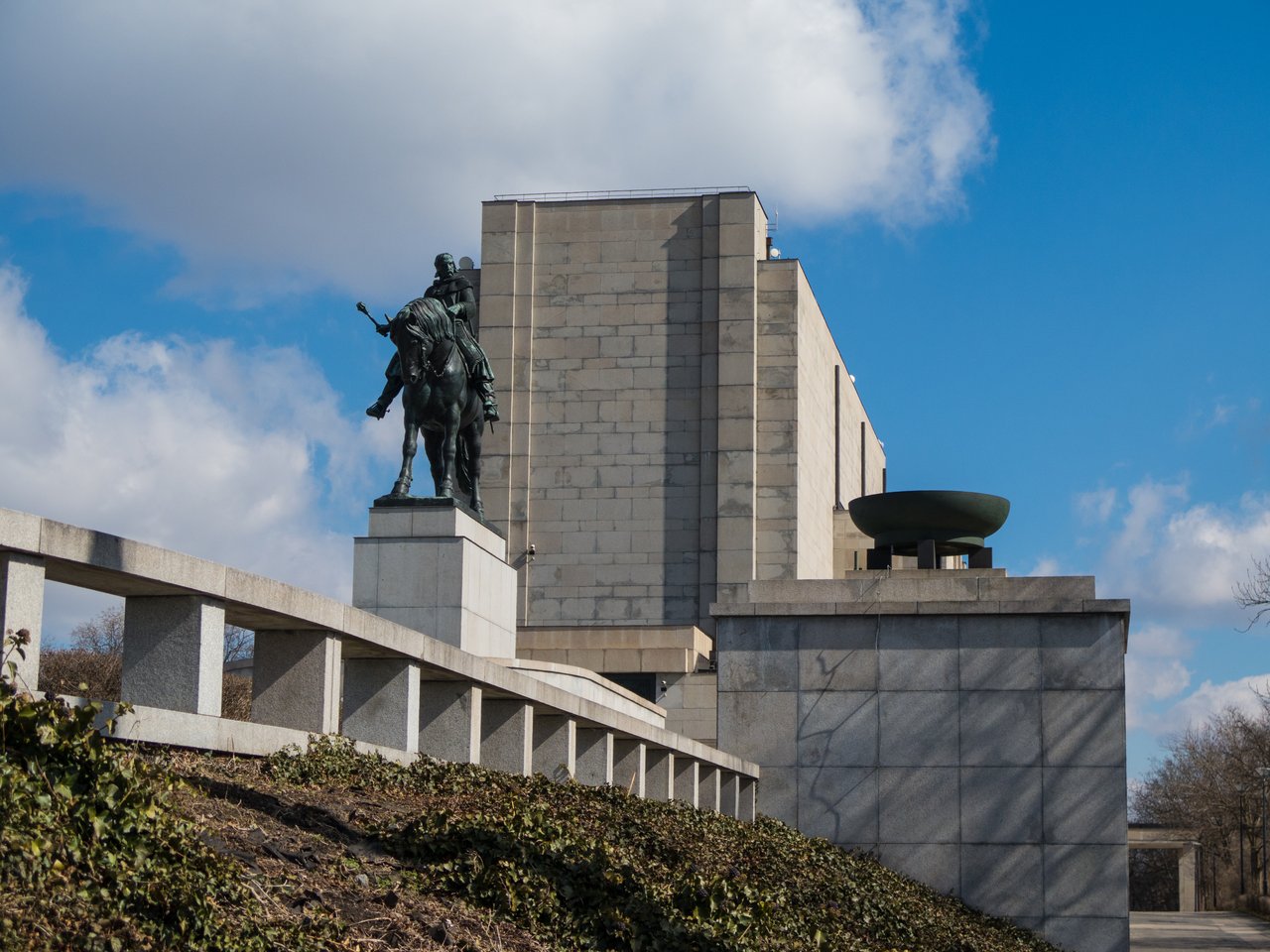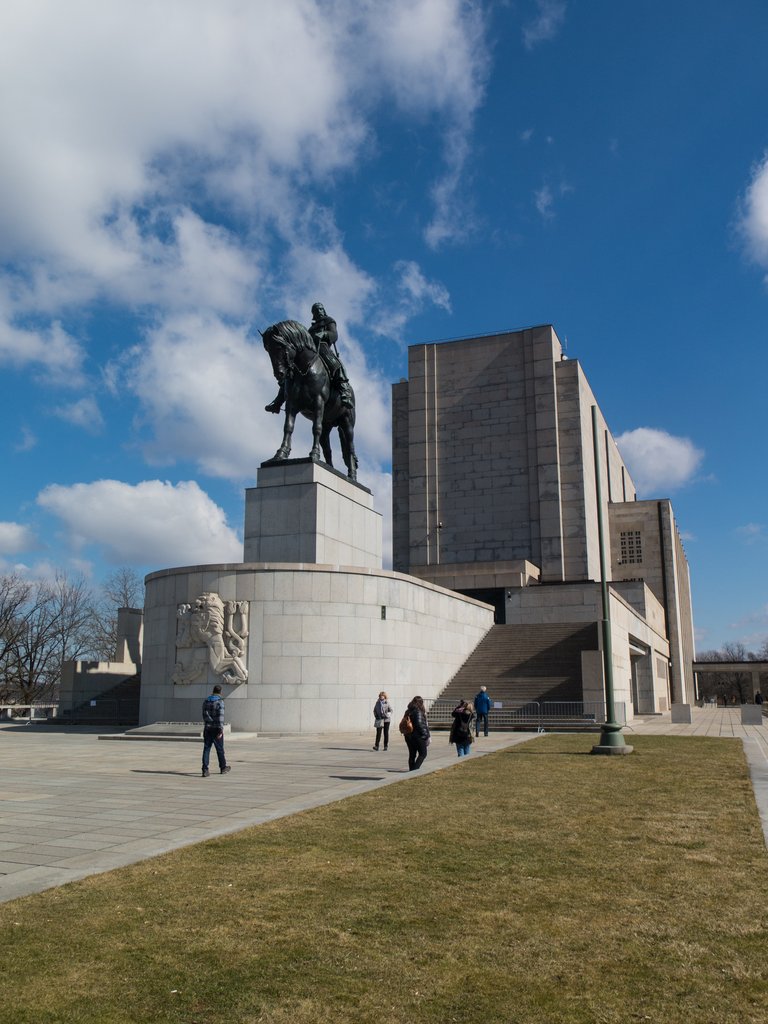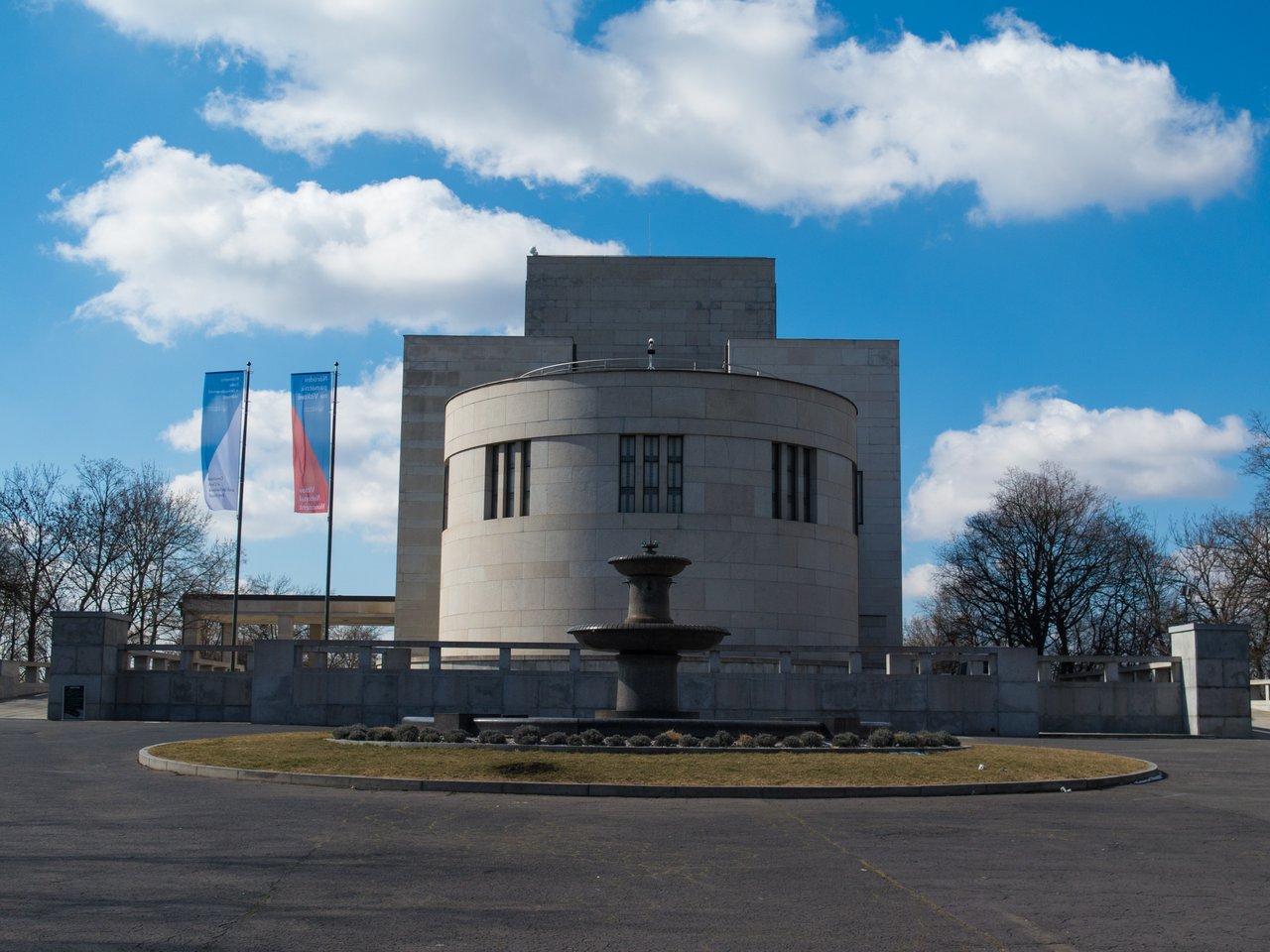The majestic memorial with the unmissable equestrian statue is a magnificent architectural monument, a site that played an important role in Czech history, and a museum, whose exhibits capture key turning points in the history of the modern Czech state. It began in the years 1929-1933 as a tribute to Czechoslovak legionnaires and resistance fighters from the First World War. Here is where we also find the tomb of the Unknown Soldier.
The National Memorial on Vítkov is an illustration of a monumental, but at the same time, strictly austere Functionalist style. The monument was designed by the architect Jan Závorka, who also designed the nearby Žižkov Military Museum. In front of the memorial stands the statue of General Jan Žižka of Trocnov, erected in 1950. In 1420, Jan Žižka, with a small army of Hussites, defeated an army of crusaders besieging Prague. Currently, this is the third largest equestrian statue in the world.
The Communist regime debased the memorial by turning it into the Klement Gottwald mausoleum, where prominent Czechoslovak Communist Party officials were buried. The mausoleum lasted from 1962 until the 1989 revolution, when all the functionaries buried there were moved.
The national sanctuary at Vítkov may have survived the Communist era, but it no longer evokes the same emotions as when it was built. The pathos of the First Republic, when Czechoslovakia was building its national identity and celebrated its heroes, is now but a memory, which returns only on national holidays.




